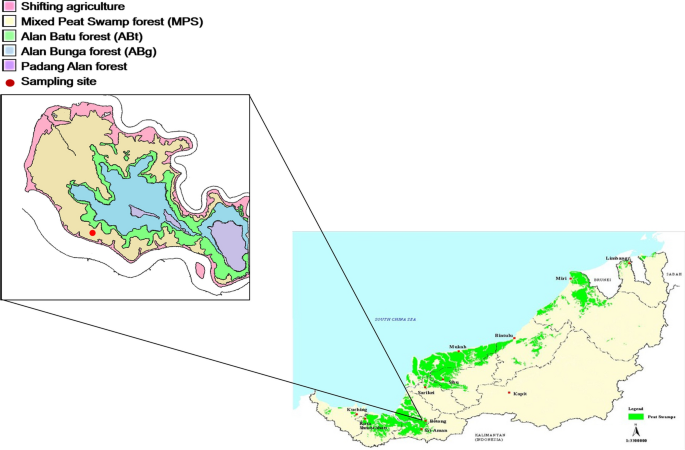Different Types Of Soil In Sarawak
Sarawak the largest state in Malaysia has the biggest reserve of peat land.
Different types of soil in sarawak. To accomplish this study eight undisturbed soil samples are collected from different location ie Desa Senadin Miri Kampung Punang. The runoff coefficient C is analyzed by considering both soil type and land use of the basin. Like in figure 3 and figure 4 the details of Balingian basin existing type of soil and land use are indicated by the colors and the conclusions are shown in the text box.
The parent material of kerangas forest soil is a sandstone and the rock is a member of Plateau Sandstone Formation. In Borneo the leaves of this species are very variable in shape. New information Veloo et al 2014 obtained from soil survey and soil classification research carried out in Sarawak Malaysia is confirming that tropical peat soils are indeed different from temperate peat soils with many of the tropical peat soils containing wood materials in the soil solum.
Case studies that have been chosen covered central of Sarawak up to the North of Sarawak. Compaction and Unconfined Compressive Strength UCS test have been conducted on remoulded peat soil samples. In Bako National Park in west Sarawak Brunig 1965J recognized a series of forest types which can be correlated with variations in the degree of podzol development and in soil texture.
The three soil families are BEKENU and MERIT Family of RYP Group BIJAT and TATAU Family of Gley Group and ANDERSON Family of Organic group. Different physical properties eg. Organic content OC liquid limit LL fiber content FC and specific gravity G s and geotechnical properties eg.
The amount of OPC QL and FA added to the peat soil sample as percentage of dry soil mass were in the range of 520. Soils that have 50 cm or more organic soil matter within 100 cm or more. Hence the present study concentrates on the stabilization of peat soil samples collected from Matang Sarawak Malaysia with different types of stabilizers or admixtures ie ordinary Portland cement quick lime and combination of quick lime and fly ash.
Brunei Kalimantan Sabah and Sarawak and Sulawesi. 520 and 28 respectively for. A very common and widespread species occurring in mixed dipterocarp riparian and submontane forest at altitudes to 1500 m on various soil types.
Few researchers focused on the stabilization of mineral soil such as clay silty clay and dispersive soil by different types of stabilizers. The available soil maps for sell are Soil Map of Sarawak and Agriculture Capability Maps of Sarawak at different price. Geotechnical properties of tropical peat soils from Matang Sarawak.
In this study ordinary portland cement OPC quick lime QL and class F fly ash FA were used as stabilizer. Peat soils originated from four different districtsregion of Sarawak namely Sibu Dalat Bintulu and Miri were reviewed in this paper. The three soil major groups are Red Yellow Podzolic RYP Gley and Organic.
Please contact Soil Management Branch at 082-429621 or visit to the office at Jalan Badruddin 93400 Kuching. The peat soil samples were taken at 0 - 03m depth at. The Soil Division of Sarawak Malaysia has adopted a definition for organic soil that is based on profile partition ie.
This Order consists of highly weathered soil materials. Geochemical properties of peat soil that being observed are pH total carbon organic matter bulk density and the total nitrogen. The major soil orders in Sarawak.
Due to suitable agriculture land scarcity in the country there is an increasing interest aming the private sector in agricultural investment in the state. MR220CL and MR263 rice variety were used in this study because they are the most common high yielding rice varieties in. The C average is obtained by using 2.
The general characteristics of these soil Orders are given here. Also very little data are available from East Malaysia especially in Sarawak. Several soil Orders Soil Survey Staff 2010 have been mapped in Sarawak.
The major soil Orders in this region are Oxisols Ultisols Entisols Inceptisols and Histosols.









